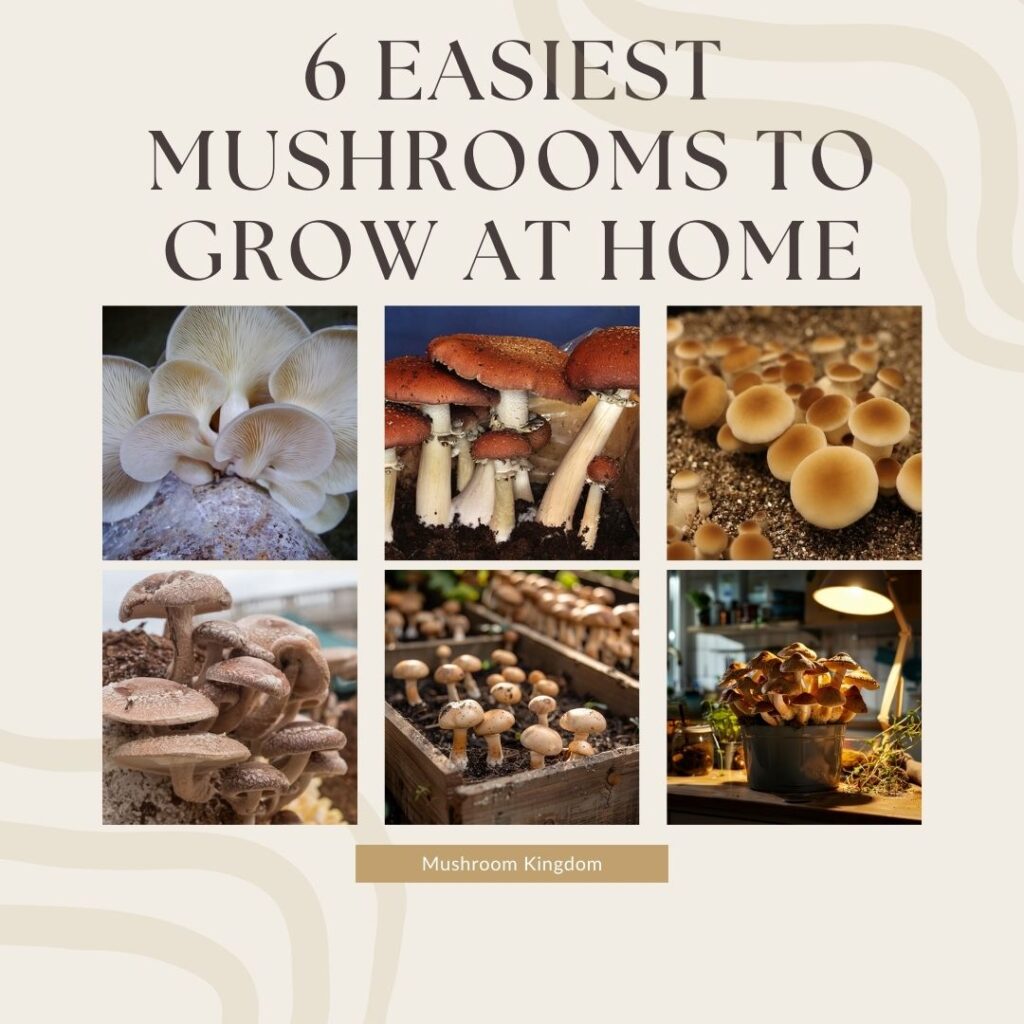Reishi mushroom (Ganoderma lucidum) is a type of fungi prized for its potential health benefits, including immune support, anti-inflammatory properties, and stress reduction.
Traditionally used in Chinese medicine, they are typically consumed as teas, extracts, powders, or supplements due to their tough texture and bitter taste.
In this article, you are going to learn:
- How to identify them in the wild
- Is Reishi edible mushroom
- Health Benefits of regular consumption
- How to consume reishi mushrooms
How To Identify Reishi Mushroom In the Wild?
Identifying Reishi mushrooms (Ganoderma lucidum) in the wild involves observing several key characteristics. Here’s a detailed guide to help you identify these mushrooms:

- Cap Shape and Color — Reishi mushrooms have a distinct kidney or fan-shaped cap. The cap is typically reddish to reddish-brown with a shiny, varnished appearance. Younger mushrooms may be more orange or yellow.
- Texture and size — The surface of the cap is smooth and shiny, appearing almost lacquered. The underside is white to light brown with fine pores (not gills). Reishi mushrooms typically grow on hardwood trees, such as oak, maple, and hemlock. You can often find them at the base of stumps or on the trunks of dead or dying trees.
- Spores —The spores are brown and are released from the pores on the underside of the cap.
Steps to Identify Reishi Mushrooms
- Locate Hardwood Forests: Search in areas with plenty of hardwood trees. Reishi mushrooms are less common on softwoods.
- Look for Distinctive Caps: Spot the kidney-shaped, varnished caps on trees, logs, or stumps.
- Check the Underside: Flip or look under the cap to confirm the presence of fine pores instead of gills.
- Observe the Color and Texture: Confirm the characteristic reddish-brown, shiny surface.
- Consider the Season: Note the time of year to ensure it aligns with the typical growing season of Reishi mushrooms.
- Take Spore Print: If needed, take a spore print. Place the mushroom cap, pores down, on a piece of white paper for several hours to confirm brown spores.
Is Reishi An Edible Mushroom?
Reishi mushrooms (Ganoderma lucidum) are technically edible, but people generally do not consume them for their culinary value. Instead, they are highly regarded for their medicinal properties.
Reishi mushrooms have a tough, woody texture that makes them difficult to chew and digest if eaten whole. They have a very bitter taste, which is not palatable for most people.
Due to their tough texture and bitter taste, Reishi mushrooms are usually not eaten fresh or cooked in dishes like other mushrooms (e.g., button mushrooms, shiitake mushrooms). Instead, they are often dried and used to make teas, extracts, tinctures, and powders.
What Is Reishi Mushroom Good For?
Reishi mushrooms have been used in traditional medicine for thousands of years and are renowned for their potential health benefits. Modern research has also begun to validate many of these traditional uses.
Here are some of the key benefits associated with Reishi mushrooms:
Immune System Support
Reishi mushrooms are believed to boost the immune system. They contain compounds like beta-glucans, which can stimulate the activity of white blood cells, enhancing the body’s defense mechanisms against infections and illnesses.
Anti-Inflammatory Properties
Reishi mushrooms have anti-inflammatory effects, which can help reduce inflammation in the body. This may be beneficial for conditions such as arthritis and other inflammatory diseases.
Antioxidant Effects
Reishi mushrooms are rich in antioxidants, which help combat oxidative stress and protect cells from damage caused by free radicals. This can contribute to overall health and may reduce the risk of chronic diseases.
Stress Reduction and Improved Sleep
Reishi mushrooms are adaptogens, meaning they help the body cope with stress. They can promote relaxation and improve sleep quality, making them useful for managing anxiety and insomnia.
Cardiovascular Health
Some studies suggest that Reishi mushrooms can help lower blood pressure, reduce cholesterol levels, and improve overall cardiovascular health. These effects can contribute to a reduced risk of heart disease.
Liver Health
Reishi mushrooms have hepatoprotective properties, meaning they can help protect the liver from damage. They may aid in detoxifying the liver and improving its function.
Anti-Cancer Potential
There is some evidence that Reishi mushrooms may have anti-cancer properties. Compounds in Reishi, such as triterpenes, may inhibit the growth of cancer cells and enhance the efficacy of chemotherapy.
Blood Sugar Regulation
Reishi mushrooms may help regulate blood sugar levels, making them potentially beneficial for people with diabetes or those at risk of developing diabetes.
How To Consume Reishi Mushrooms?
You can consume Reishi mushrooms in several ways, depending on your preference and the form of Reishi available. Here are some common methods:
1. Reishi Tea
Ingredients:
- Dried Reishi mushrooms (slices or powder)
- Water
Instructions:
- Preparation: If using whole dried mushrooms, break them into smaller pieces or slices.
- Boil Water: Bring a pot of water to a boil.
- Simmer: Add the Reishi mushroom pieces or powder to the boiling water. Reduce the heat and let it simmer for 30 minutes to 2 hours. The longer it simmers, the stronger the tea will be.
- Strain: Strain the liquid to remove the mushroom pieces.
- Drink: You can drink the tea as is, but it has a bitter taste. Adding honey, lemon, or ginger can help improve the flavor.
2. Reishi Powder
How to Use:
- Smoothies: Add a teaspoon of Reishi powder to your favorite smoothie.
- Coffee/Tea: Stir Reishi powder into your coffee or tea.
- Food: Mix the powder into soups, stews, or other dishes.
3. Reishi Capsules or Tablets
Usage:
- Dosage: Follow the dosage instructions on the product label. Typically, experts recommend you should take one to two capsules or tablets per day.
- Convenience: This is one of the most convenient ways to consume Reishi, especially for those who do not like the taste.
How Long Does It Take For Reishi Mushroom To Work?
In general, for acute conditions such as stress reduction or relaxation, some individuals may experience effects within a few hours of consuming Reishi, especially if taken in a concentrated form like a tincture or extract.
However, for chronic conditions such as immune support or inflammation reduction, it may take several weeks or even months of consistent use to observe significant results.
Overall, the time it takes for Reishi mushrooms to exert their effects can vary depending on factors such as individual metabolism, dosage, form of consumption, and the specific health condition. Some people may experience noticeable benefits relatively quickly, while for others, it may take more time.


